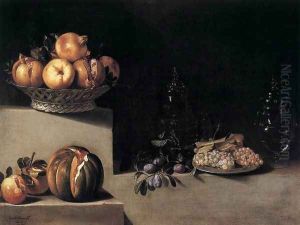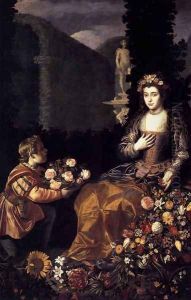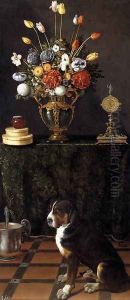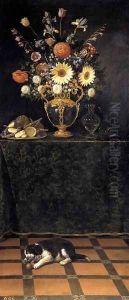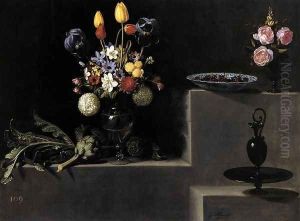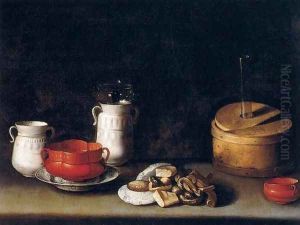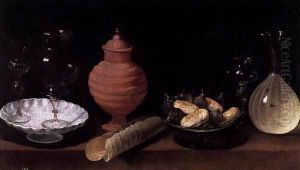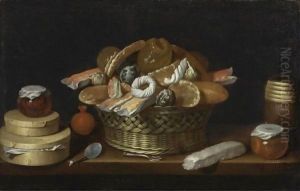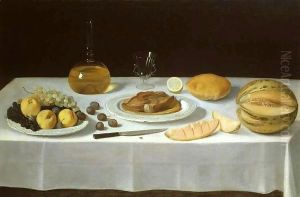Juan Van Der Hamen Paintings
Juan Van Der Hamen y León was a Spanish still life painter of the early 17th century. Van Der Hamen was born on April 8, 1596, in Madrid to a wealthy family of Flemish origin. His father, Jan Van Der Hamen, was a Flemish tapestry worker, and his mother, Geronima León, was Spanish. The influence of his Flemish heritage is evident in his work, particularly in the precision of his still life compositions.
Van Der Hamen is considered one of the pioneers of the Spanish still life, known as 'bodegón' or 'naturaleza muerta'. He showed remarkable talent and innovation in depicting everyday objects with a striking sense of realism and meticulous attention to detail. His compositions often featured fruits, flowers, and objects arranged on tables with a sober background that highlights the textures and colors of the subjects.
He gained renown at a young age, becoming court painter to King Philip IV of Spain. His work was highly appreciated by the Spanish nobility, and he received numerous commissions from religious institutions and private collectors. Van Der Hamen's paintings were not only valuable for their aesthetic qualities but also served as a symbol of wealth and status for their owners.
Despite his success, Van Der Hamen's life was marred by personal tragedies. His wife died young, and he was left to care for their children alone. His career was cut short when he passed away at the age of 35 on March 28, 1631. His sudden death was a significant loss to the Spanish art world, as it ended the career of one of the most promising painters of his generation.
Today, Juan Van Der Hamen y León is recognized for his contributions to the development of still life painting in Spain. His works are preserved in major museums around the world, including the Prado Museum in Madrid, where they continue to be admired for their beauty and historical significance.
